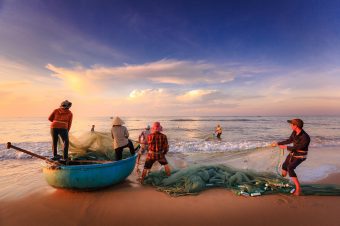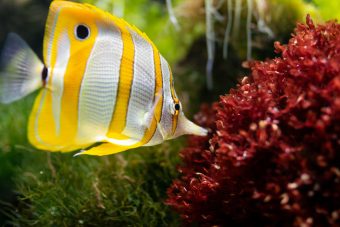
A remote area in the middle of the Indian Ocean, between the Seychelles and Mauritius, this underwater plateau the size of Belgium is home to the world’s largest seagrass meadow, some of the few shallow water corals so far away from land and an abundance of marine life.
The bank provides feeding habitats for endangered turtles and breeding grounds for majestic sperm whales and pygmy blue whales.
Seagrass meadows occupy a vanishingly small area of our oceans but capture up to twice as much carbon dioxide as forests on land, making them extremely important for our climate and the balance of the ocean. This applies to the cold-water eelgrass meadows in Sweden, as well as seagrass meadows in tropical waters.
They function as nurseries for vulnerable cod spawn in the north and feeding grounds for sea turtles and dugongs in the Indian Ocean. But these ecosystems are in decline across the globe due to human activity, making it crucial to protect the remaining areas.
More:
The Saya de Malha Bank has been identified as an ecologically and biologically significant area of global interest by scientific experts. Places like these could be safe havens for marine life, protected in a vast network of ocean sanctuaries across our blue planet.
But the rich wildlife, especially the shoals of tuna that pass by on their journey through the high seas, attracts the real predators: the fishing industry. A few powerful fishing nations are depleting marine life around the world, and this hotspot in the heart of the Indian Ocean is no exception. Industrial fishing vessels from the EU, mainly Spain and France, fish for yellowfin tuna, a population that has been classified as overfished for several years.
These vessels use huge fishing nets that can stretch for 2km and reach 200m deep. The net is placed in a ring around a school of fish and pulled together from below – scooping up pretty much anything that gets in its way. Turtles, whales and sharks can be caught up in the net as ‘bycatch’ and young yellowfin tuna are trapped before they have a chance to reproduce.

The other type of destructive fishing that takes place around Saya de Malha Bank is longline fishing. This method is used by around 500 ships, from distant water fleets, using a single long line, anywhere from 50 to 120km long, with thousands of hooks.
Can’t imagine that? It’s like 1,000 football pitches, laid end to end. The biggest problem with this fishing method is that it also catches and kills many other animals as bycatch, especially already endangered sharks.
We must ensure that rich companies and nations stop this destruction of life in the oceans, which not only impoverishes wildlife but also the coastal communities that are truly dependent on small-scale fishing for survival. It’s critical that we protect important areas of the ocean to give marine life a chance to recover and thrive.
Governments are negotiating this treaty at the UN already – we have an opportunity to make history if we get this right. Join us in calling for governments around the world to take action to protect our oceans: join over 3,5 million people and sign the petition.
Source: Greenpeace



